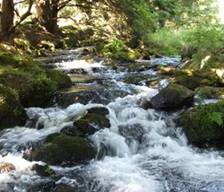11.1 Introduction
The Northland Regional Council has responsibilities under the Resource Management Act to control water use, and to monitor the quantity and quality of groundwater. Sustainable management of groundwater resources can only be achieved from accurate knowledge of the environment itself, including climate, water quantity, water quality, present water use and potential demand for water in Northland.
 Groundwater quantity and quality in Northland is related to geology, soils, land use and rainfall. As a result of varying geology the groundwater resources also vary significantly in groundwater extent, quantity and quality. Aquifers in Northland range from small sand aquifers scattered along the east coast, large basalt aquifers in areas surrounding Whangarei, Kaikohe and Kerikeri, to larger sand/shell aquifer in the Far North.
Groundwater quantity and quality in Northland is related to geology, soils, land use and rainfall. As a result of varying geology the groundwater resources also vary significantly in groundwater extent, quantity and quality. Aquifers in Northland range from small sand aquifers scattered along the east coast, large basalt aquifers in areas surrounding Whangarei, Kaikohe and Kerikeri, to larger sand/shell aquifer in the Far North.
Groundwater is an important source of water and is predominantly used for public water supplies, such as Poroti Springs, shown in the photograph (right), which flows from the Whatitiri aquifer and is used for public water supply.
Regional Policy Statement objective
Northland Regional Council has stated a number of objectives relating to groundwater within the Regional Policy Statement for Northland (NRC 2002). These seek to maintain groundwater quantity and quality to the extent that the use of groundwater resources is sustainable.
The Regional Policy Statement (RPS) objectives are:
· The maintenance or enhancement of the water quality of natural water bodies in Northland to be suitable, in the long term, and after reasonable mixing of any contaminant with the receiving environment and disregarding the effect of any natural events, for the purposes listed below:
- Protection of uses of receiving water body, cultural purposes.
· The reduction and minimisation of the quantities of contaminants which adversely affect water quality entering water bodies, in particular those that are potentially toxic, persistent or bio-accumulative.
· Avoid, remedy or mitigate the adverse effects of discharges of contaminants on the traditional, cultural and spiritual values of water held by tangata whenua.
· The maintenance of water flows and levels in natural water bodies that are sufficient to preserve their life-supporting capacity, natural character, intrinsic values and any other associated or dependant values.
· The maintenance of groundwater levels to the extent that the use of groundwater resources is sustainable.
· The efficient use and conservation of water resources.
The NRC works towards these objectives by controlling activities which impact on groundwater and by monitoring groundwater to detect long term trends.
Environmental results anticipated
The following is the anticipated environmental results after the implementation of the policies pertaining to groundwater management in the Regional Policy Statement:
· Water quality is suitable for desired purposes.
· Contaminants in water bodies reduced.
· The adverse effects of contaminants in water bodies and coastal waters be avoided, remedied or mitigated.
· Protection of important freshwater habitats, particularly natural wetlands from reductions in surface water and ground water levels.
· Protection of the values of water bodies held by tangata whenua.
· Sustainable and efficient use of the water resources of Northland.
· Increased awareness of water conservation and the greater implementation of water conservation practices.
